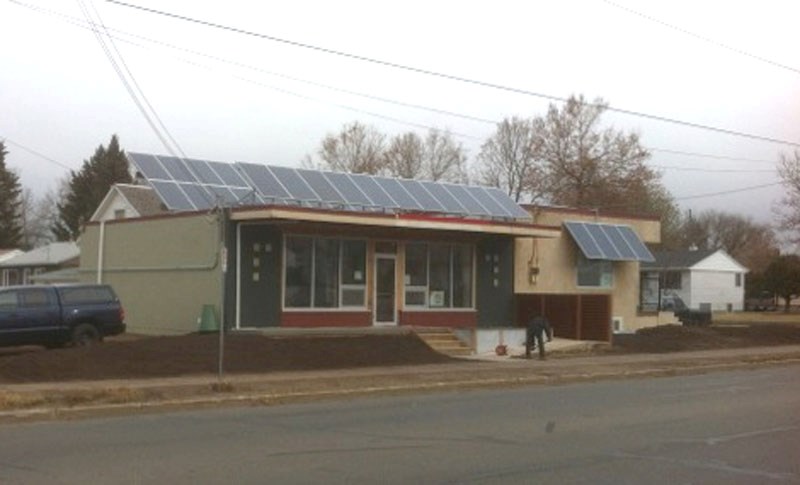When Warren Sarauer bought his new office in Edmonton, it leaked heat like a sieve. The 50-year-old convenience store had single-pane windows, multiple heaters and as little as two inches of insulation in some spots.
"The equivalent R-value of it was probably 0.2 or something," he jokes, referring to a measure of heat retention (where R-0 is extremely poor and R-100 is exceptional).
"It blocked the wind and that was about all it did," he says.
Now, thanks to new insulation and solar panels, Sarauer's place is one of the most efficient places on the block, as he's turned this ancient building into a net-zero home. This Dec. 7, he's giving a talk at Grant MacEwan University to explain how he did it.
It cost him about $4,000 to make the building energy efficient, he notes — less than it cost to make it wheelchair accessible. The solar panels cost $40,000, which is less than buying and using a company car for five years.
"From a business point of view, it really is quite affordable," he said.
Making the old new again
Sarauer's talk is part of a series on renewable power by the Solar Energy Society of Alberta. This renovation is an example of how Albertans can improve existing buildings in our cities, says Rob Harlan, the group's executive director.
This year has been the 10th hottest year on record so far, according to the World Meteorological Organization. It's been a year when greenhouse gas levels reached record highs and Arctic sea ice volumes hit record lows.
Buildings are a big part of the greenhouse gas problem, notes Sarauer, chair of the Solar Energy Society of Alberta, as they account for about 40 per cent of our energy use in North America.
Commercial buildings tend to be far less efficient than residential ones, he notes. Alberta's building codes hold them to 1960s-levels of efficiency, and their owners have little incentive to invest in them — they just pass the energy costs onto their renters.
Sarauer, who runs a renewable energy company, says he wanted to show how business owners could easily upgrade their buildings to be more energy efficient.
The renovations took about four months and cost about $125,000, he says. Step one was adding Styrofoam insulation to the floors, walls and roof, raising their heat retention values to R15, R50 and R80. (Most homes have about half of these values.)
Step two was the windows, which were so old that they needed replacing anyway. Sarauer says he went with double-pane windows instead of the triple or quadruple ones found in some net-zero homes to keep the project simple. He also added two skylights for air-conditioning and a six-foot overhang over the south-facing windows. The overhang cools the building in the summer and lets in heat during the winter.
Next came the usual technology associated with these sorts of projects: efficient appliances, LED lighting and heat-recovery ventilators. The solar array atop the building cranks out about 10,000 kilowatt-hours of power a year, Sarauer notes — enough to supply about 90 per cent of the building's heat and all of its lighting. The end result is a 50-year-old building that should produce about as much energy as it uses over the course of a year.
"It's really not that complicated," Sarauer says of what he did — all he needed was insulation and a good contractor. "This is not space-age stuff."
But we won't get more of these kinds of places unless the province requires them under its building code, he says.
"The government has to do something about it."
Sarauer's talk is at 7 p.m. Wednesday in Grant MacEwan's CN Theatre. Visit solaralberta.ca for details.




